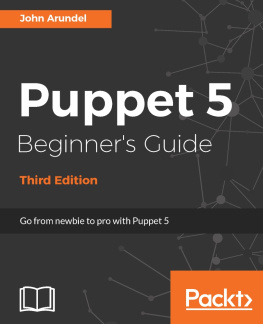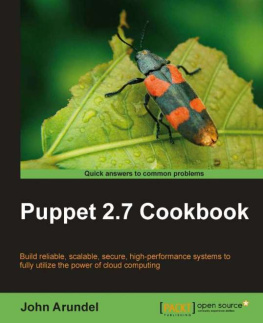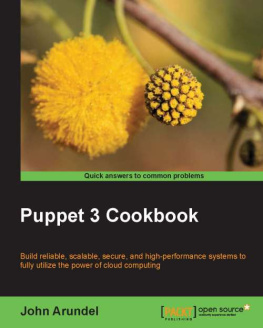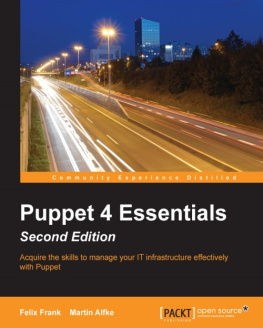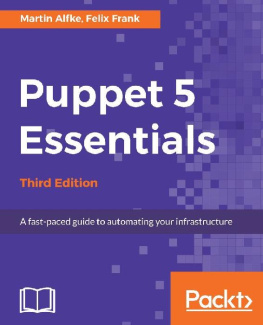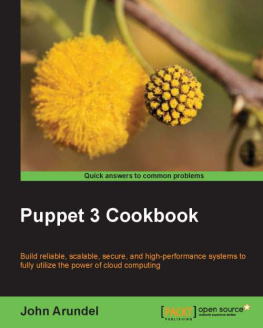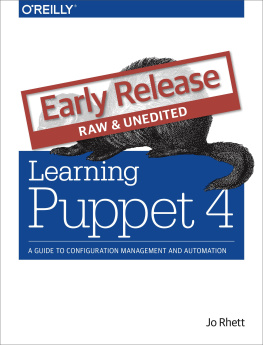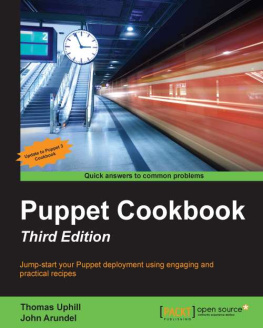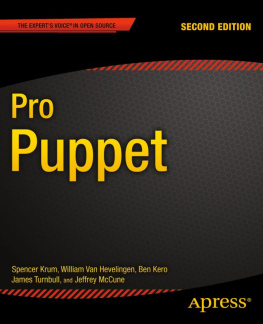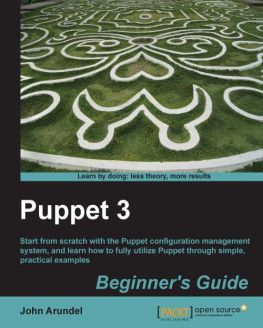About the Author
John Arundel is a DevOps consultant, which means he helps people build world-class web operations teams and infrastructure and has fun doing it. He was formerly a senior operations engineer at global telco Verizon, designing resilient, high-performance infrastructures for major corporations such as Ford, McDonald's, and Bank of America. He is now an independent consultant, working closely with selected clients to deliver web-scale performance and enterprise-grade resilience on a startup budget.
He likes writing books, especially about Puppet ( Puppet 2.7 Cookbook and Puppet 3 Cookbook are available from Packt as well). It seems that at least some people enjoy reading them, or maybe they just like the pictures. He also provides training and coaching on Puppet and DevOps, which, it turns out, is far harder than simply doing the work himself.
Off the clock, he is a medal-winning competitive rifle and pistol shooter and a decidedly uncompetitive piano player. He lives in a small cottage in Cornwall, England and believes, like Cicero, that if you have a garden and a library, then you have everything you need.
You may like to follow him on Twitter at @bitfield.
Acknowledgments
My grateful thanks are due to Jo Rhett, who made innumerable improvements and suggestions to this book, and whose Puppet expertise and clarity of writing I can only strive to emulate. Also to the original Puppet master, Luke Kanies, who created a configuration management tool that sucks less, and my many other friends at Puppet. Many of the key ideas in this book came from them and others including Przemyslaw 'SoboL' Sobieski, Peter Bleeck, and Igor Gali.
The techniques and examples in the book come largely from real production codebases, of my consulting clients and others, and were developed with the indispensable assistance of my friends and colleagues Jon Larkowski, Justin Domingus, Walter Smith, Ian Shaw, and Mike Thomas. Special thanks are also due to the Perseids Project at Tufts University, and most of all to the inestimable Bridget Almas, who patiently read and tested everything in the book several times and made many valuable suggestions, not to mention providing continuous moral support, love, and guidance throughout the writing process. This book is for her.
About the Reviewer
Jo Rhett is a DevOps architect with more than 25 years of experience conceptualizing and delivering large-scale Internet services. He creates automation and infrastructure to accelerate deployment and minimize outages.
Jo has been using, promoting, and enhancing configuration management systems for over 20 years. He builds improvements and plugins for Puppet, Mcollective, Chef, Ansible, Docker, and many other DevOps tools.
Jo is the author of the following books:
- Learning Puppet 4 by O'Reilly
- Learning MCollective by O'Reilly
- Instant Puppet 3 Starter by Packt Publishing
I'd like to thank the Puppet community for their never-ending inspiration and support.
www.PacktPub.com
eBooks, discount offers, and more
Did you know that Packt offers eBook versions of every book published, with PDF and ePub files available? You can upgrade to the eBook version at > for more details.
At www.PacktPub.com, you can also read a collection of free technical articles, sign up for a range of free newsletters and receive exclusive discounts and offers on Packt books and eBooks.
https://www.packtpub.com/mapt
Do you need instant solutions to your IT questions? PacktLib is Packt's online digital book library. Here, you can search, access, and read Packt's entire library of books.
Why subscribe?
- Fully searchable across every book published by Packt
- Copy and paste, print, and bookmark content
- On demand and accessible via a web browser
Customer Feedback
Thanks for purchasing this Packt book. At Packt, quality is at the heart of our editorial process. To help us improve, please leave us an honest review on this book's Amazon page at https://www.amazon.com/dp/1788628810.
If you'd like to join our team of regular reviewers, you can e-mail us at <>. We award our regular reviewers with free eBooks and videos in exchange for their valuable feedback. Help us be relentless in improving our products!
Preface
There are many bad ways to write a technical book. One simply rehashes the official documentation. Another walks the reader through a large and complex example, which doesn't necessarily do anything useful, except show how clever the author is. Yet another exhaustively sets out every available feature of the technology, and every possible way you can use them, without much guidance as to which features you'll really use, or which are best avoided.
Like you, I read a lot of technical books as part of my job. I don't need a paraphrase of the documentation: I can read it online. I also don't want huge blocks of code for something that I don't need to do. And I certainly don't want an uncritical exposition of every single feature.
What I do want is for the author to give me a cogent and readable explanation of how the tool works, in enough detail that I can get started using it straight away, but not so much detail that I get bogged down. I want to learn about features in the order in which I'm likely to use them, and I want to be able to start building something that runs and delivers business value from the very first chapters.

